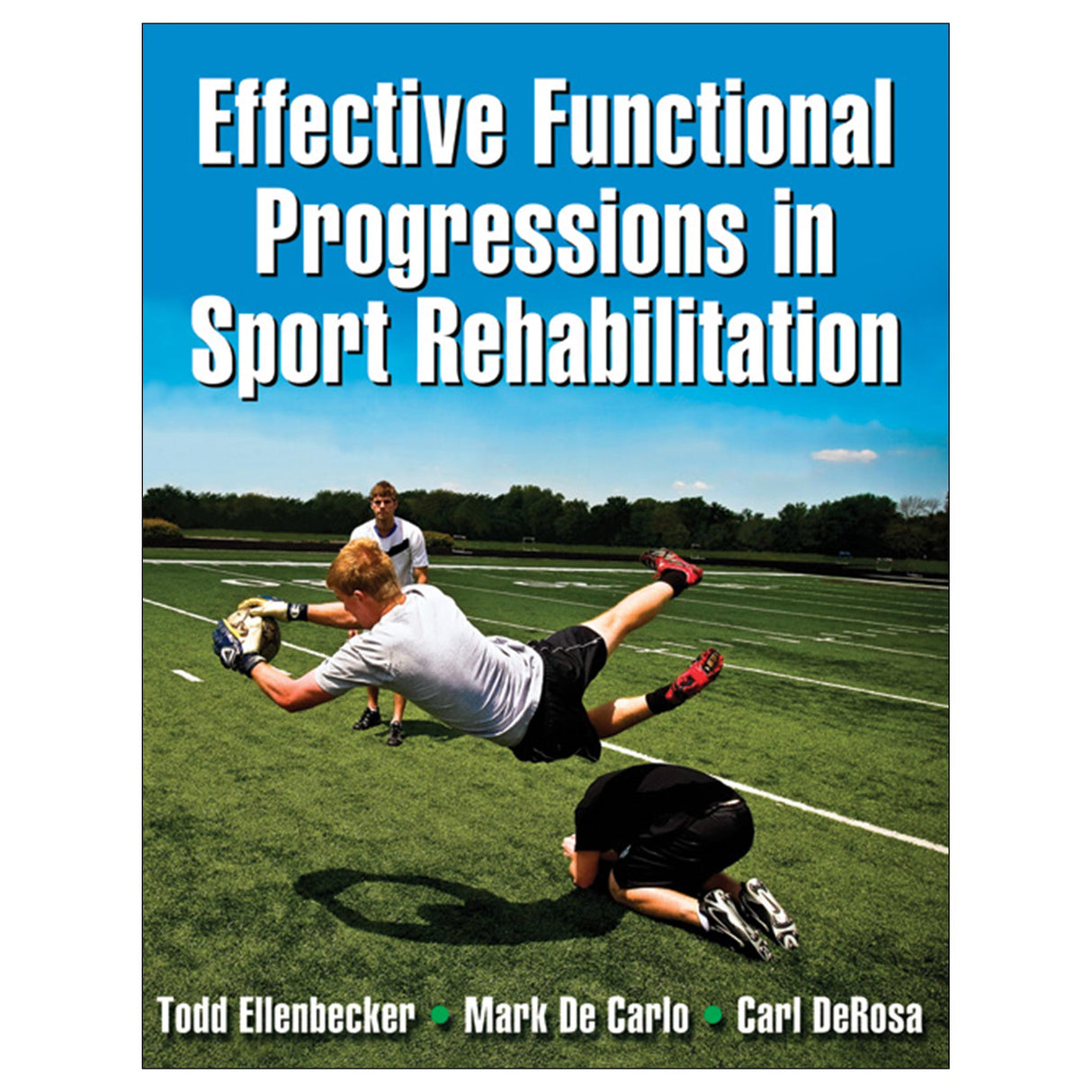Effective Functional Progressions in Sport Rehabilitation
$89.95 CAD
One of the most challenging tasks for a sports medicine clinician is rehabilitating an injured athlete for a successful return to competition. Effective Functional Progressions in Sport Rehabilitation provides clinicians with the strategies and tools they need to prepare their clients for the physical demands required by their sport.
This complete reference helps clinicians understand the important concepts of functional progressions and equips them to develop rehabilitation programs specific to the needs of their clients. The authors break down the text into three regional areas—upper extremities, lower extremities, and trunk—before delving into the specific anatomical and biomechanical differences within each area. They also present the neuromuscular basis for the specific approaches to each region and provide exercises in functional progressions that simulate the activity the athlete needs to perform to be effective in his or her sport again.
Clinicians will find evidence-based, functional tests and learn how to interpret and use the test results to develop specific rehabilitation programs. In that respect, this book will be particularly useful for designing individualized programs because clinicians can choose the specific exercises that will benefit their clients. Effective Functional Progressions in Sport Rehabilitation also provides
-sport-specific progressions for numerous sports, including golf, football, baseball, soccer, and running;
-kinetic chain exercises and information on the kinetic chain concept, outlining the transfer of energy between segments during functional activities and sport-specific movement patterns;
-photos that illustrate how progressions should be completed and medical art that shows the bones, muscles, and ligaments that are most often affected by injuries; and
-a recipe-like structure for functional and clinical progressions that makes it easy to see how a progression should be completed and provides continuity and ease of use across the book.
Effective Functional Progressions in Sport Rehabilitation also features an online component that allows users access to every image from the text as well as sample templates in both Microsoft Word and PowerPoint. Clinicians can select and paste the images they need into the Word document, type in specific instructions, and print it for their clients to take home as a reference. Instructors can do the same with the presentation package template, using the images and customizing text to accompany each image. The images and sample templates are available at www.HumanKinetics.com/EffectiveFunctionalProgressionsinSportRehabilitation.
With its functional progressions for all areas of the body, sport-specific progressions, photos and art that clearly depict progressions and injured areas, and its adaptability to be customized by clinicians in designing their own programs, Effective Functional Progressions in Sport Rehabilitation is the ideal tool for clinicians to use in returning athletes safely back to action.
Audience
Reference for physical therapists, athletic trainers, and other sports medicine and rehabilitation specialists, including orthopedic doctors; also a text for courses in sport rehabilitation curriculums.
Part I. Components of Functional Progressions
Chapter 1. Introduction to Functional Progression
Benefits of a Functional Progression
Clinical Guidelines for Functional Progression
Guidelines for Initiating a Functional Progression
Summary
Chapter 2. Developing Successful Functional Progression Programs
Key Components of Functional Progression Programs
Kinetic Link Principle
Summary
Part II. Regional Functional Progressions
Chapter 3. Upper Extremity
Anatomy of the Upper Extremity
Muscular Stabilization of the Upper Extremity
Biomechanics of the Upper Extremity
Injuries
Functional Testing of the Upper Extremity
Functional Exercise Progressions
Summary
Chapter 4. Lower Extremity
Anatomy of the Lower Extremity
Muscular Stabilization of the Lower Extremity
Biomechanics of the Lower Extremity
Injuries
Functional Testing of the Lower Extremity
Clinical Exercise Progressions
Functional Exercise Progressions
Summary
Chapter 5. Trunk
Anatomy of the Trunk
Muscular Stabilization of the Trunk
Biomechanics of the Trunk
Injuries
Functional Testing of the Trunk
Functional Exercise Tests and Progressions
Summary
“Overall, this is a very useful textbook for all clinicians working directly with athletes at any level. It provides concise, accurate, and clinically useful information for understanding sports injuries, rehabilitation, and return to play progressions.”
—Doody’s Book Review (4-star review)
Example of scapular stabilization progressions
Examples of functional exercise progressions
Examples of muscular strength tests for the upper extremity
Introduction to the key components of functional progression programs
Muscular stabilization exercises for the knee
Online resource. The online resource includes all images from the text as well as sample templates in both Word and PowerPoint. Clinicians can select and paste the images they need into the Word document, type in specific instructions, and print it for their clients to take home as a reference. Instructors can do the same with the presentation package template, using the images and customizing text to accompany each image.





